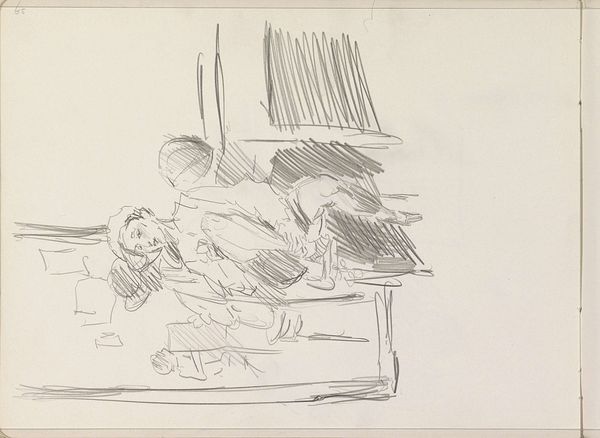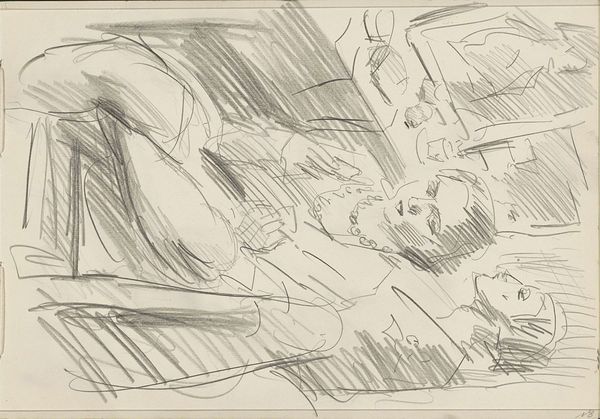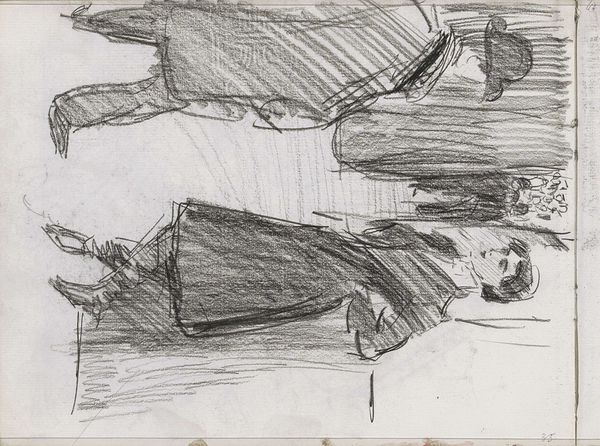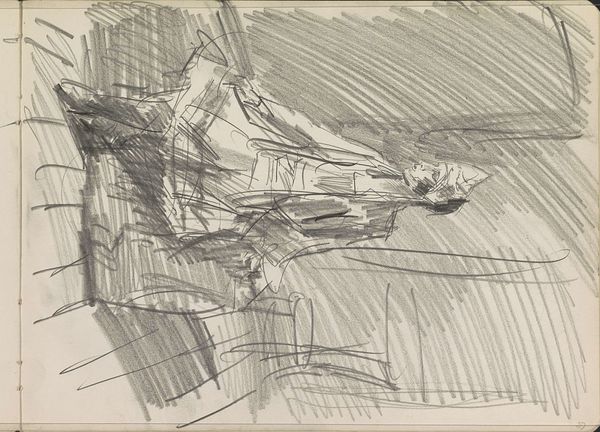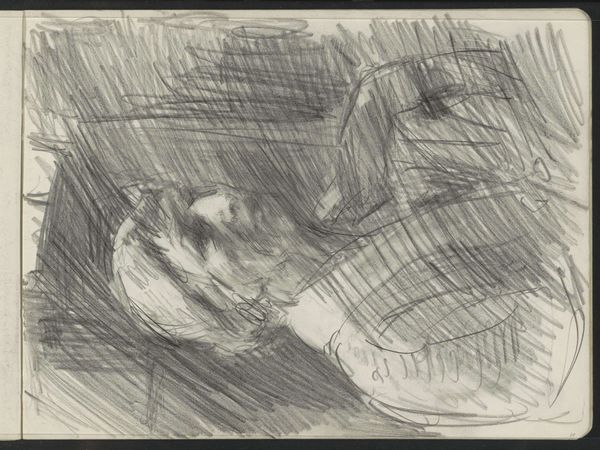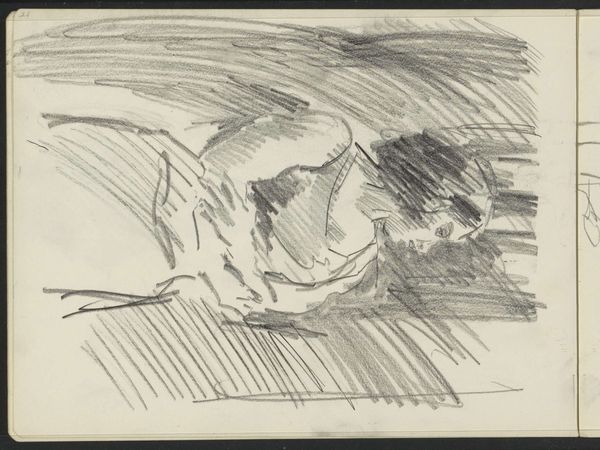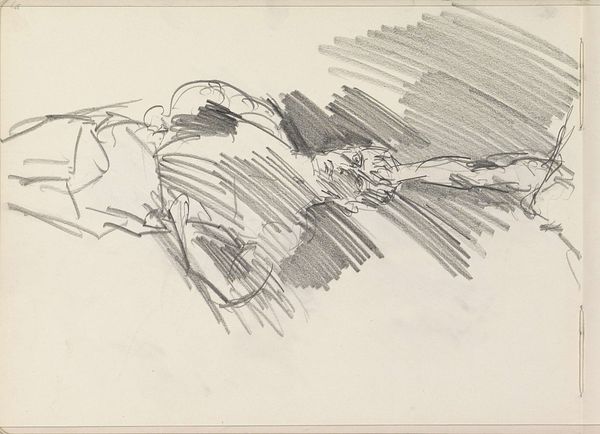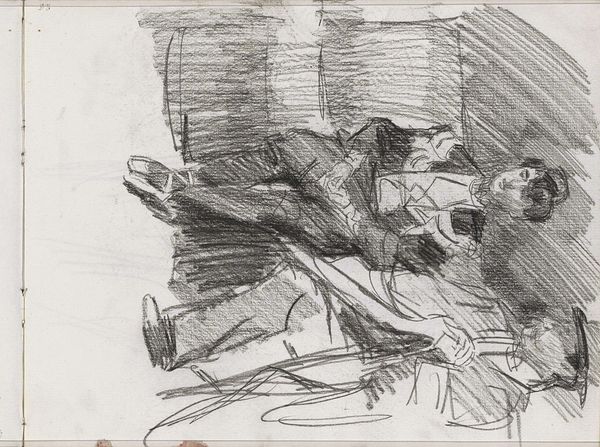
Copyright: Rijks Museum: Open Domain
Editor: So, this is "Vrouw in een kleedkamer" by Isaac Israels, made sometime between 1875 and 1934. It's a drawing, seemingly pencil on paper, housed here at the Rijksmuseum. There's something so intimate and immediate about this sketch. How do you interpret this work? Curator: This drawing gives us a glimpse into the artist's process, his way of capturing fleeting moments and private realities. It reminds me how the spaces we occupy, even seemingly mundane dressing rooms, are deeply coded with social and cultural meaning. What do you think Israels was trying to convey about women's roles in the late 19th and early 20th centuries by depicting this scene? Editor: I hadn’t considered the setting itself! I guess I just saw a woman, seemingly at rest, almost vulnerable. Perhaps Israels was using this intimate setting to challenge the more traditional, idealized portrayals of women common at the time? Curator: Precisely! The work’s accessibility allows Israels to explore beyond idealized imagery, probing questions of women's lived experiences and challenging established artistic conventions and public perception of women during this period. This more naturalistic style, capturing candid moments, aligned with the broader Impressionist movement, reflecting shifts in how society viewed and represented individuals, particularly women, in art. Does that make sense? Editor: Yes, it does! It’s fascinating how even a quick sketch like this can hold so much cultural weight. Curator: And it also prompts questions about who has the right to represent whom, and in what ways. Israels was a man, depicting a woman in a private space. Today, we're much more conscious of power dynamics in representation. Editor: That’s a really important point, the work reflects art historical context, while simultaneously forcing a more critical analysis of present contexts, doesn’t it? Curator: It does, indeed! It allows us to contemplate artistic progress, the significance of setting in redefining conventions, and the critical viewpoints needed for interpretation. Thank you.
Comments
No comments
Be the first to comment and join the conversation on the ultimate creative platform.
